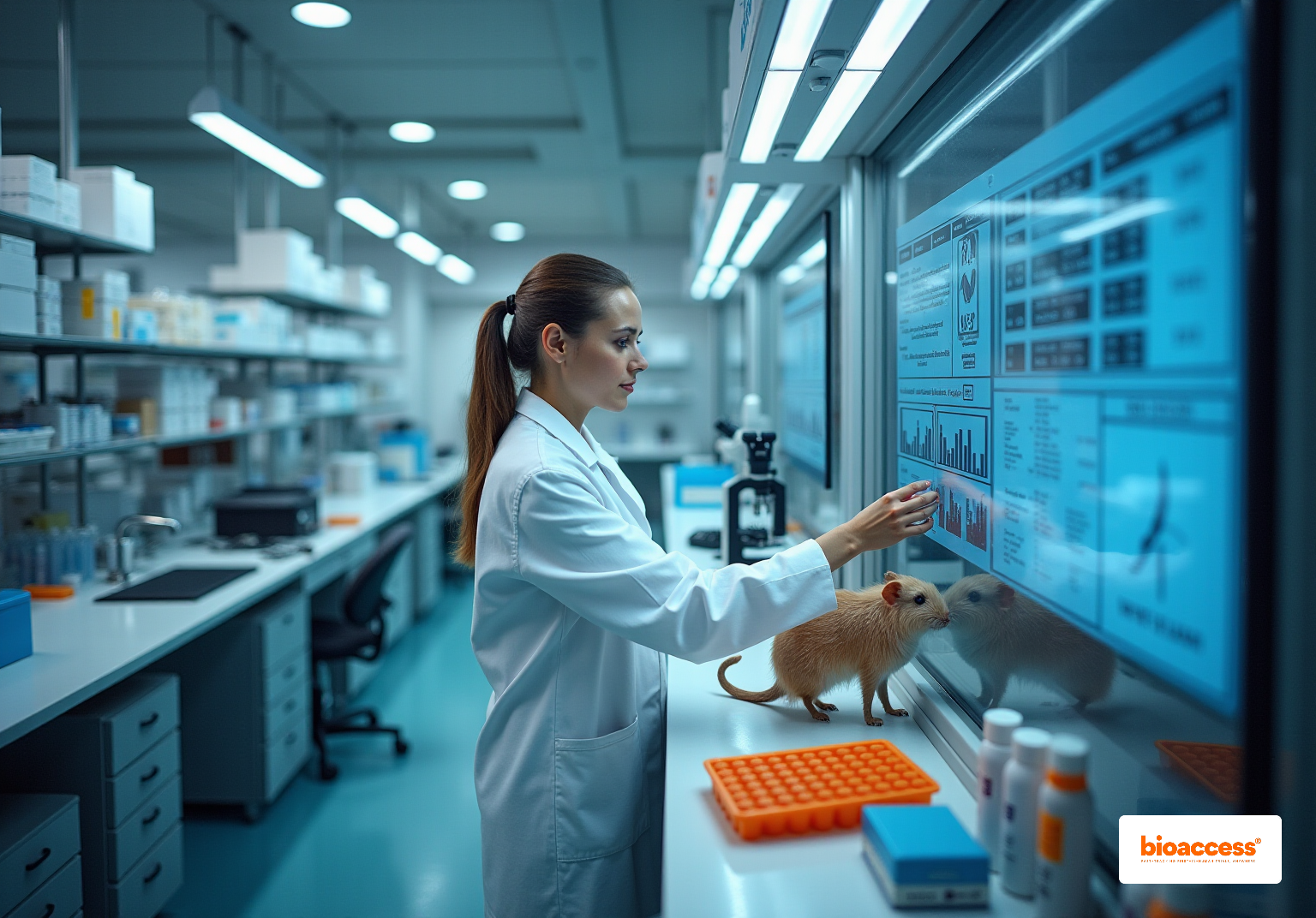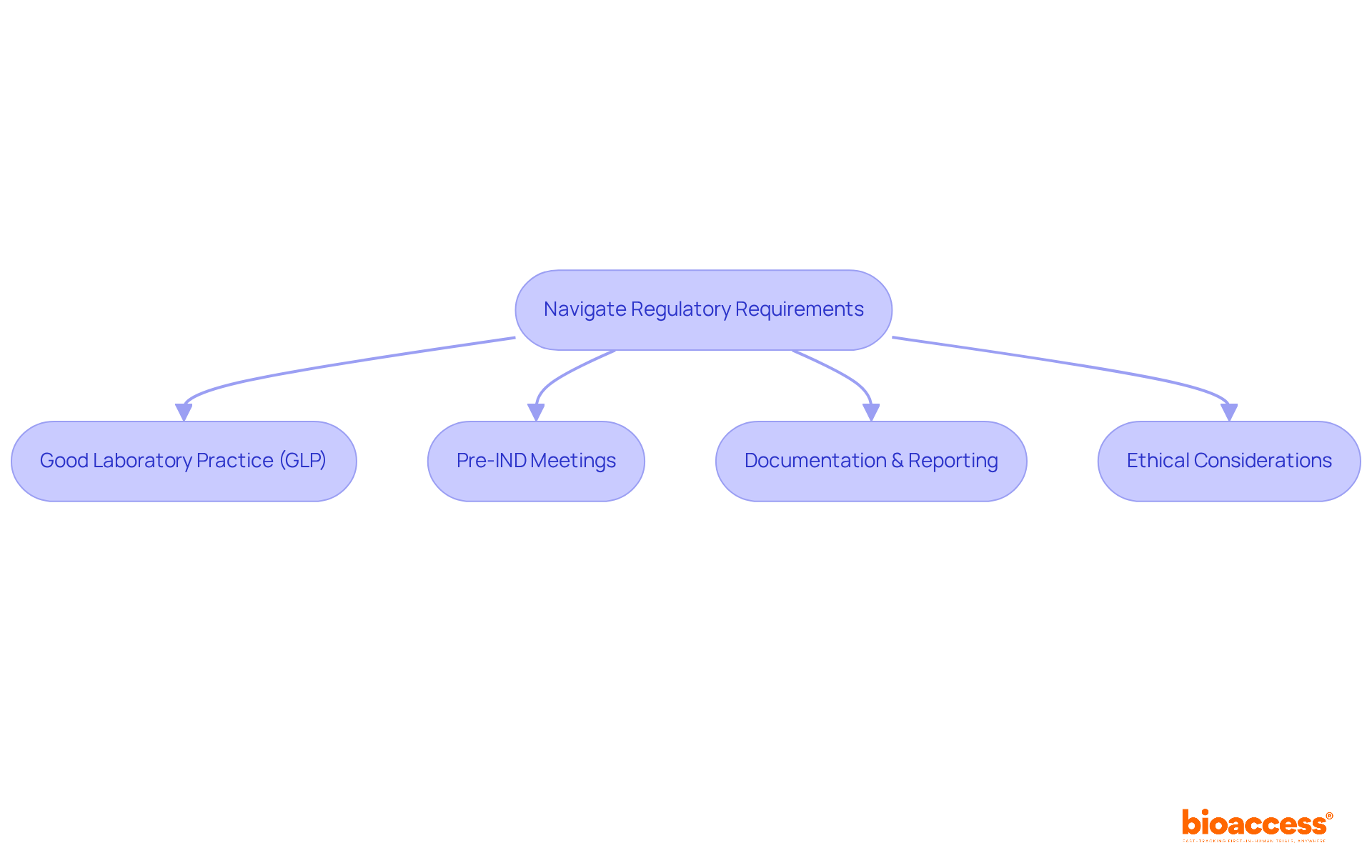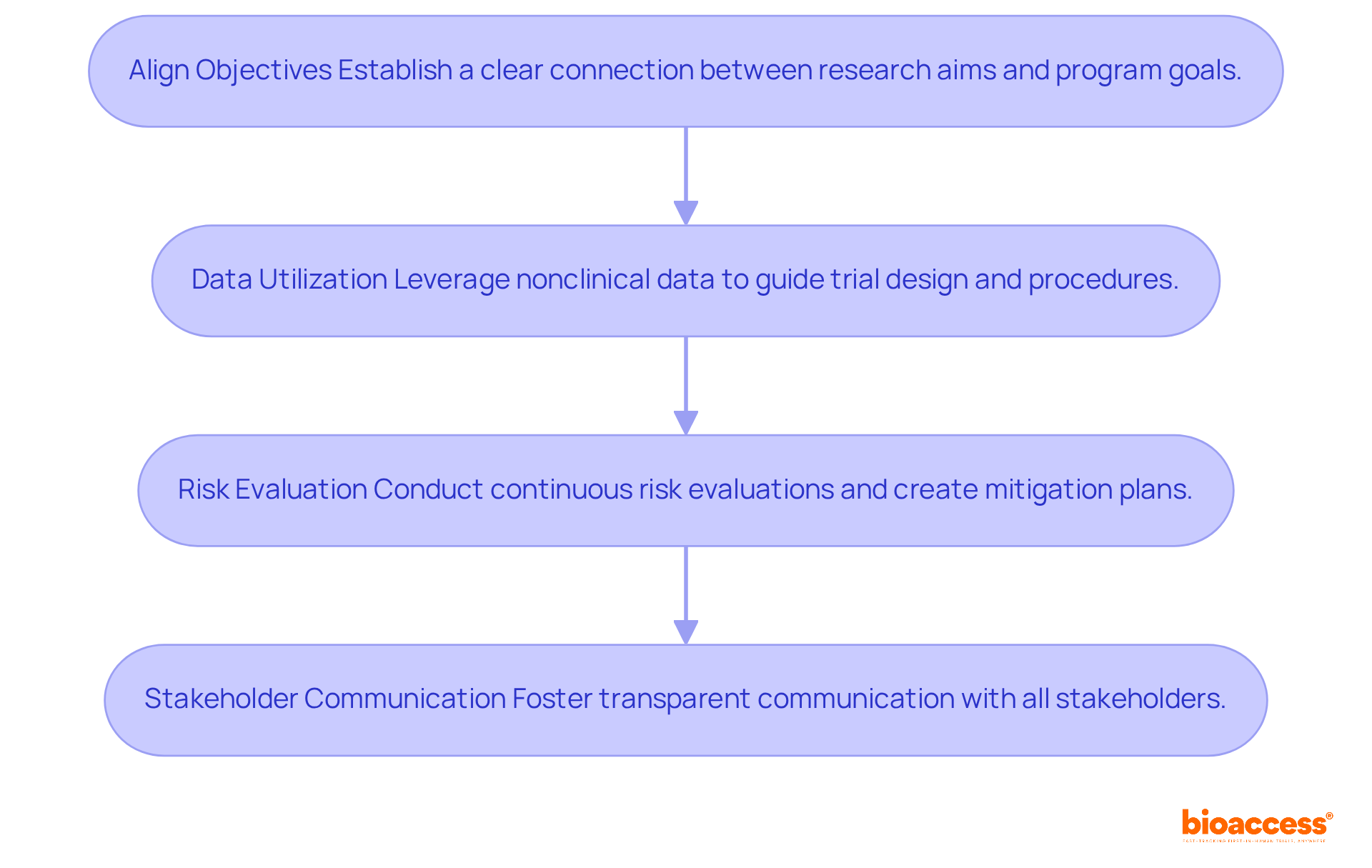


This article underscores the significance of mastering nonclinical studies to elevate clinical research strategies, emphasizing their essential function in drug development. It delineates how nonclinical evaluations, such as toxicology and pharmacokinetic studies, are pivotal in establishing safety profiles and informing trial designs. This process mitigates risks and ensures that only viable drug candidates advance to human testing. Ultimately, this facilitates regulatory compliance and enhances research outcomes.
Nonclinical studies form the essential foundation for successful clinical research, acting as the gatekeepers that determine which drug candidates are safe and viable for human trials. These preclinical evaluations rigorously assess safety and efficacy through laboratory and animal testing, while also informing the design of clinical trials and regulatory submissions.
However, with the stakes so high, how can researchers ensure that their nonclinical investigations are both comprehensive and compliant with evolving regulatory standards? This article explores the essential types of nonclinical studies, their regulatory implications, and strategies for effectively integrating them into clinical research. Ultimately, the goal is to enhance the success rate of new drug developments.
Nonclinical investigations, often referred to as preclinical evaluations, are essential components of the medication development process. These evaluations encompass laboratory and animal testing to assess the safety and biological activity of a drug prior to human trials. Such investigations enable scientists to gain insights into the pharmacokinetics, pharmacodynamics, and toxicology of a compound, providing essential data that informs the design of human trials.
By establishing a safety profile and determining effective dosages, preclinical evaluations significantly mitigate risks during human research, ensuring that only the most promising candidates advance to trials. A substantial number of medications fail to progress due to inadequate preclinical assessments, underscoring the critical role these evaluations play in ensuring that only the most viable candidates enter human trials.
As the landscape of medication development evolves in 2025, the importance of preclinical evaluations remains paramount in shaping successful clinical research strategies. Furthermore, with over 25 million participants in the research community supporting these initiatives, the collaborative nature of research is evident.
The FDA emphasizes that nonclinical research is essential for the development of medications, biologics, or devices, highlighting their regulatory significance. Importantly, nonclinical research can occur at any stage throughout the product life cycle, ensuring its ongoing relevance and adaptability.

Key types of nonclinical studies essential for drug development include:
Toxicology Research: These investigations evaluate the possible harmful impacts of a substance on living organisms, concentrating on dose-response relationships and recognizing adverse effects. Pivotal toxicology is required in two species for a duration ranging from two weeks to three months. The typical length for toxicology research can vary from a few weeks to a few months, with expenses usually surpassing hundreds of thousands of dollars, based on the intricacy and prerequisites of the examination.
Pharmacokinetic Research: These analyses investigate how a medication is absorbed, distributed, metabolized, and excreted in the body. They offer essential perspectives on the medication's effectiveness and safety, impacting trial design and dosing schedules. A recent research highlighted that pharmacokinetics account for merely 5% of the factors leading to failure in clinical development, underscoring the essential role of pharmacokinetics in the success of medication development.
Pharmacodynamic Research: These examinations explore the biological impacts of a medication on the body and its mechanism of action, which is crucial for determining therapeutic windows. They assist in comprehending how the medication interacts with its target and the anticipated results at different dosage levels.
Safety Pharmacology Investigations: These investigations assess the possible effects of a medication on essential organ systems, ensuring that it does not present considerable risks to human health. They are essential for recognizing any possible cardiovascular, respiratory, or central nervous system effects that could result from medication administration.
Genotoxicity Research: These investigations ascertain if a compound can harm genetic material, which is essential for evaluating long-term safety. The Ames test, for instance, is an initial assay utilized to assess the genotoxic potential of new substances by identifying mutations in bacteria, directing further testing and advancement of new medicines.
In the context of drug safety evaluations, experts emphasize the significance of thorough nonclinical toxicology investigations to ensure that the reports submitted to regulatory bodies accurately represent the experimental work conducted. J.B. Calixto noted that the principles of Good Laboratory Practice (GLP) are designed to ensure the reliability of safety data, which is essential for minimizing the risk of adverse effects in clinical trials and ultimately ensuring patient safety.

Regulatory requirements for nonclinical research vary by region, but they usually include several key components that are essential for effective clinical studies.
Good Laboratory Practice (GLP) stands as a cornerstone in this framework. Adhering to GLP guidelines is vital for ensuring that research is conducted consistently and reliably. This compliance not only bolsters the credibility of the generated data but also facilitates regulatory submissions, as GLP adherence is often a prerequisite for approval. Recent statistics indicate an improvement in compliance rates for GLP in preclinical research, highlighting a growing commitment to quality and integrity in execution.
Engaging with regulatory agencies through Pre-IND meetings is another crucial step. These pre-Investigational New Drug (IND) discussions clarify expectations and streamline the approval process, allowing for a more efficient transition from nonclinical phases to clinical phases. Such early engagement can significantly mitigate potential challenges later in the development process.
Documentation and reporting are equally important. Comprehensive documentation of research protocols, results, and methodologies is essential for regulatory review. Meticulous maintenance of all records provides the foundation for demonstrating compliance and ensuring the integrity of the research.
Ethical considerations must not be overlooked. Conducting research ethically, with a strong emphasis on animal welfare, is paramount. Regulatory bodies expect that all nonclinical research adheres to ethical standards, fostering public trust and aligning with the principles of responsible scientific inquiry.
In summary, a robust understanding of these regulatory requirements, particularly the updates and examples related to GLP, is critical for navigating the complexities of research effectively.

To effectively integrate nonclinical studies into a clinical research strategy, it is essential to consider the following steps:
Align Objectives: Establish a clear connection between the aims of research projects and the overarching goals of the research program. This alignment is vital for enabling a seamless transition from preclinical to trial phases, ensuring that all research efforts are focused on shared outcomes.
Data Utilization: Leverage information gathered from research outside of medical settings to guide the design of trial procedures. This encompasses vital elements such as dose selection, defining the patient group, and establishing pertinent endpoints, which are crucial for the success of research studies.
Risk Evaluation: Conduct continuous risk evaluations based on results from preclinical investigations. Creating proactive mitigation plans to address potential obstacles identified during these investigations is essential for minimizing interruptions in trials.
Stakeholder Communication: Foster transparent communication with all stakeholders, including regulatory authorities such as INVIMA, the Colombia National Food and Drug Surveillance Institute. Effectively conveying nonclinical findings within the context of research ensures that all parties are informed and aligned, which is essential for regulatory compliance and successful trial execution. Additionally, consider the comprehensive clinical trial management services offered by bioaccess, which include feasibility studies, site selection, compliance reviews, trial setup, import permits, project management, and reporting to support the integration process.

Nonclinical studies are an indispensable foundation for successful clinical research strategies, playing a pivotal role in ensuring the safety and efficacy of new drugs before they reach human trials. These evaluations not only help in establishing a drug's safety profile but also guide the design of clinical trials by providing critical data on pharmacokinetics, pharmacodynamics, and toxicology. By understanding the complexities of nonclinical research, stakeholders can make informed decisions that significantly enhance the chances of clinical success.
Throughout this article, we explored key types of nonclinical studies, including:
Each of these studies contributes vital insights that inform trial designs and regulatory compliance, ultimately safeguarding public health. The importance of adhering to regulatory requirements, such as Good Laboratory Practice (GLP), has been emphasized, highlighting how ethical considerations and thorough documentation are crucial for maintaining trust and integrity in the research process.
Reflecting on the significance of nonclinical studies, it becomes clear that they serve as the backbone of clinical research planning. By integrating findings from these investigations into the clinical trial design, researchers can better anticipate risks, streamline regulatory approvals, and enhance overall research outcomes. As the landscape of drug development continues to evolve, fostering collaboration and communication among all stakeholders will be essential to navigate the complexities of nonclinical and clinical research effectively. Engaging with these studies is not merely a regulatory obligation; it is a commitment to advancing medical science and ensuring patient safety.
What are nonclinical studies?
Nonclinical studies, also known as preclinical evaluations, are investigations that involve laboratory and animal testing to assess the safety and biological activity of a drug before human trials.
What is the purpose of nonclinical studies in medication development?
The purpose of nonclinical studies is to provide insights into the pharmacokinetics, pharmacodynamics, and toxicology of a compound, which helps establish a safety profile and determine effective dosages, thereby mitigating risks during human research.
Why are nonclinical evaluations important for human trials?
Nonclinical evaluations are important because they ensure that only the most promising drug candidates, which have undergone adequate safety assessments, advance to human trials, reducing the likelihood of failure during clinical phases.
How does the FDA view nonclinical research?
The FDA considers nonclinical research essential for the development of medications, biologics, or devices, highlighting its regulatory significance in the drug development process.
At what stages can nonclinical research occur?
Nonclinical research can occur at any stage throughout the product life cycle, ensuring its ongoing relevance and adaptability in the medication development process.
What is the role of the research community in nonclinical studies?
The research community, with over 25 million participants, plays a collaborative role in supporting nonclinical studies, which are vital for shaping successful clinical research strategies.